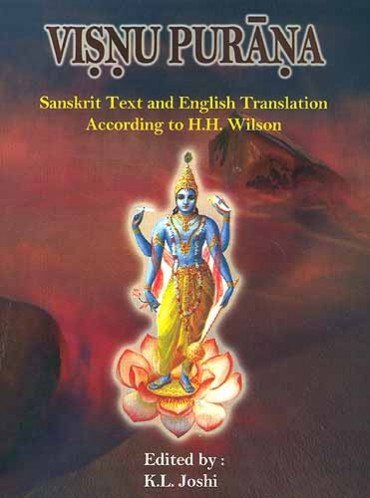The Vishnu Purana
by Horace Hayman Wilson | 1840 | 287,946 words | ISBN-10: 8171102127
The English translation of the Vishnu Purana. This is a primary sacred text of the Vaishnava branch of Hinduism. It is one of the eighteen greater Puranas, a branch of sacred Vedic literature which was first committed to writing during the first millennium of the common era. Like most of the other Puranas, this is a complete narrative from the cr...
18. The Brahmāṇḍa Purāṇa
18. Brahmāṇḍa Purāṇa. “That which has declared, in twelve thousand two hundred verses, the magnificence of the egg of Brahmā, and in which an account of the future Kalpas is contained, is called the Brahmāṇḍa Purāṇa, and was revealed by Brahmā[1].”
The Brahmāṇḍa Purāṇa is usually considered to be in much the same predicament as the Skanda, no longer procurable in a collective body, but represented by a variety of Khaṇḍas and Māhātmyas, professing to be derived from it. The facility with which any tract may be thus attached to the non-existent original, and the advantage that has been taken of its absence to compile a variety of unauthentic fragments, have given to the Brahmāṇḍa, Skanda, and Padma, according to Col. Wilford, the character of being the Purāṇas of thieves or impostors[2]. This is not applicable to the Padma, which, as above shewn, occurs entire and the same in various parts of India. The imposition of which the other two are made the vehicles can deceive no one, as the purpose of the particular legend is always too obvious to leave any doubt of its origin.
Copies of what profess to be the entire Brahmāṇḍa Purāṇa are sometimes, though rarely, procurable. I met with one in two portions, the former containing, one hundred and twenty-four chapters, the latter seventy-eight; and the whole containing about the number of stanzas assigned to the Purāṇa. The first and largest portion, however, proved to be the same as the Vāyu Purāṇa, with a passage occasionally slightly varied, and at the end of each chapter the common phrase ‘Iti Brahmāṇḍa Purāṇe’ substituted for ‘Iti Vāyu Purāṇe.’ I do not think there was any intended fraud in the substitution. The last section of the first part of the Vāyu Purāṇa is termed the Brahmāṇḍa section, giving an account of the dissolution of the universe; and a careless or ignorant transcriber might have taken this for the title of the whole. The checks to the identity of the work have been honestly preserved, both in the index and the frequent specification of Vāyu as the teacher or narrator of it.
The second portion of this Brahmāṇḍa is not any part of the Vāyu; it is probably current in the Dakhin as a Saṃhitā or Khaṇḍa. Agastya is represented as going to the city Kāñcī (Conjeveram), where Viṣṇu, as Hayagrīva, appears to him, and, in answer to his inquiries, imparts to him the means of salvation, the worship of Paraśaktī. In illustration of the efficacy of this form of adoration, the main subject of the work is an account of the exploits of Lalitā Devī, a form of Durgā, and her destruction of the demon Bhāṇḍāsura. Rules for her worship are also given, which are decidedly of a Śākta or Tāntrika description; and this work cannot be admitted, therefore, to be part of a genuine Purāṇa.
Footnotes and references:
[1]:

Click to view
[2]:
As. Res. vol. VIII. p. 252.
